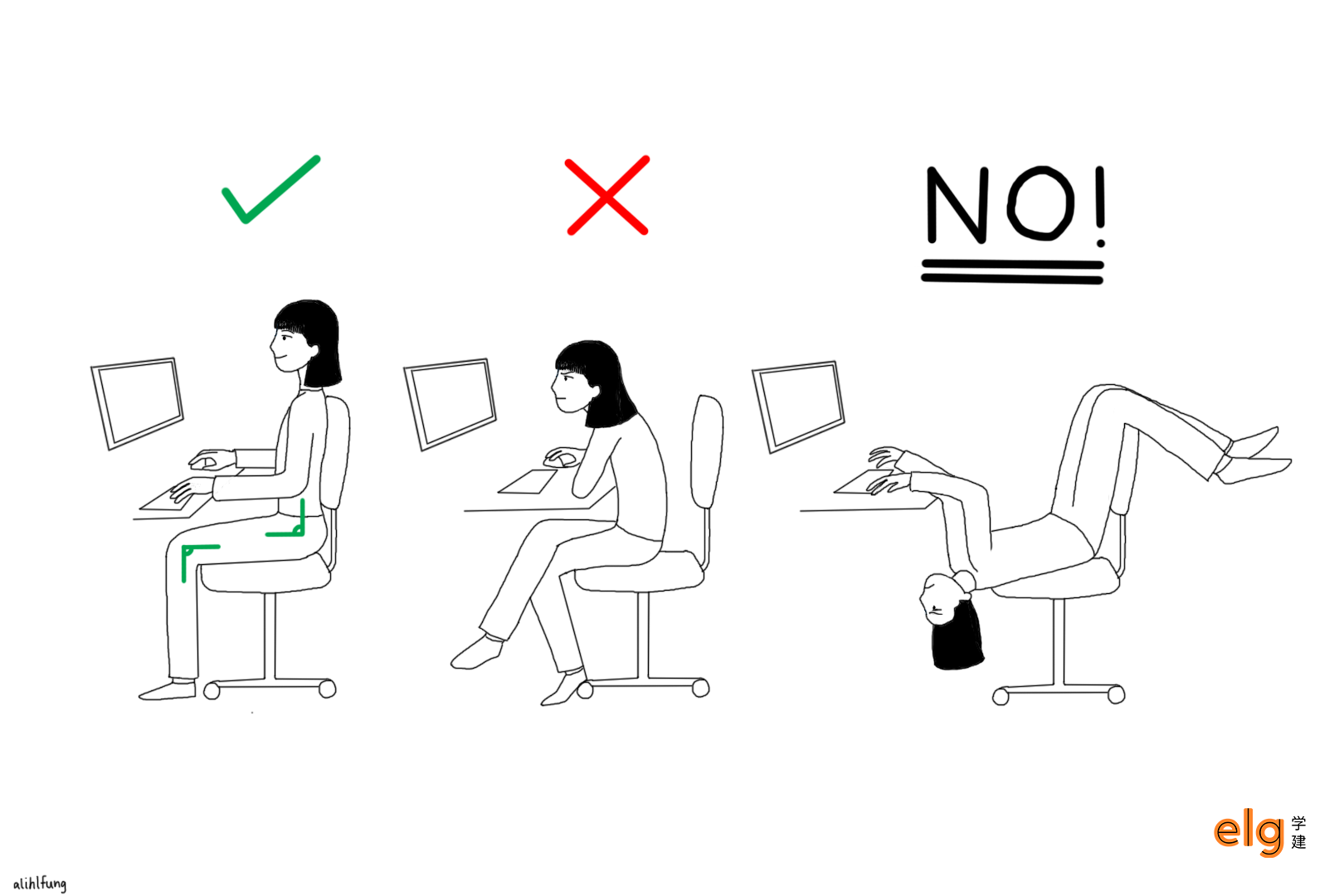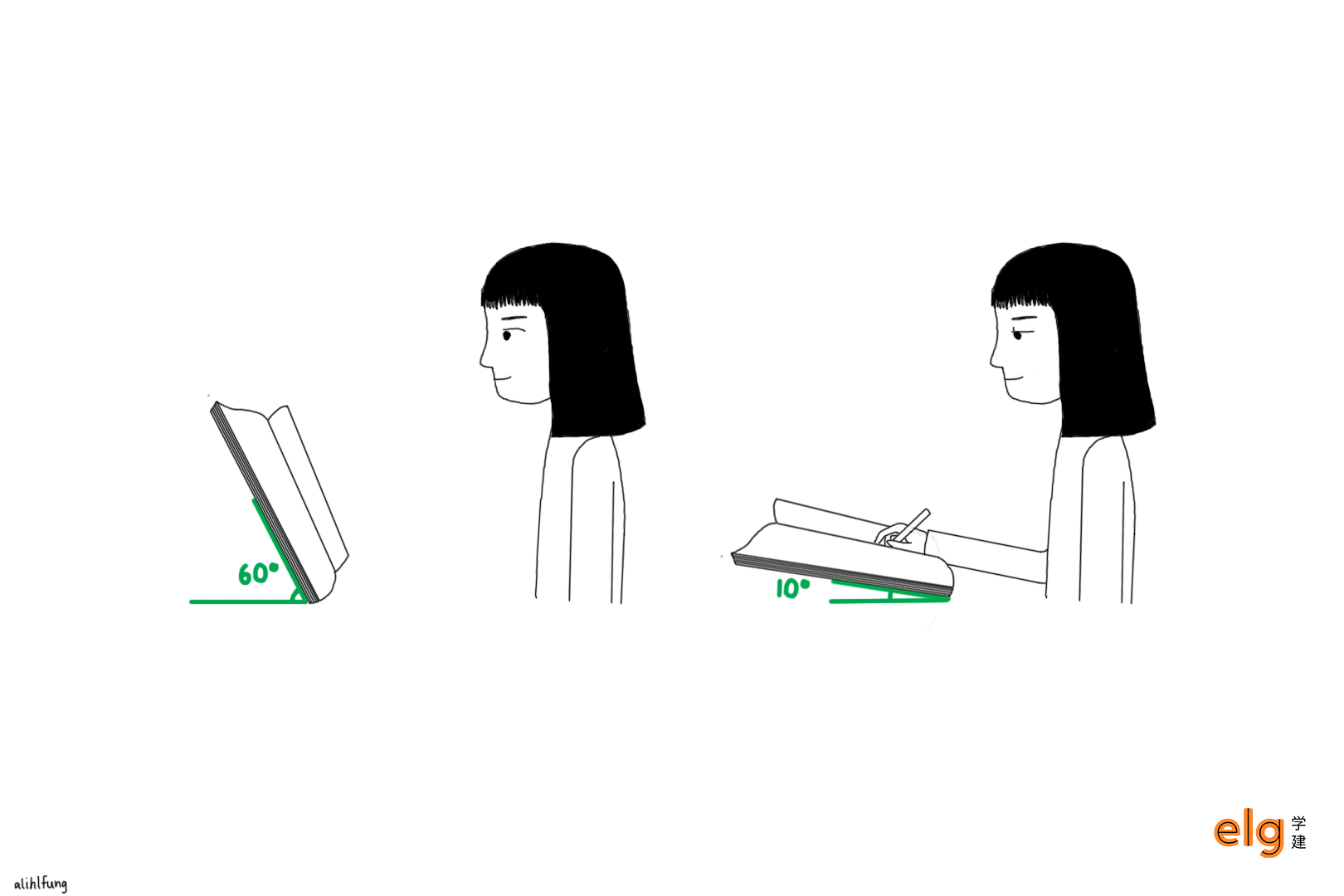Authors: Junjing Fan
Occupational Therapist
Alison Fung
Marketing Coordinator
Illustration by Alison Fung
Back to school shopping isn’t just about stationery. Your child has grown over the summer; is their homework station ready? In the first of a two-part series on posture for children, ELG’s occupational therapist, Junjing Fan shares her expertise to help you create the perfect, most ergonomic homework station for your child.
Junjing highlights the need to get furniture appropriate to the height and size of your child, and for the furniture to be able to adapt to the types of homework tasks your child will need to do. “You should take into account the nature of the tasks your child needs to complete, particularly the duration, posture, force and repetition of such tasks,” Junjing says. Adjustability is key when looking for the right furniture for your child, not just because different tasks require different postures, but also to adapt to your child as they grow.
Look for the Chair Necessities

“Hips and knees should rest at approximately 90 degrees, with the feet resting comfortably on the floor,” says Junjing. If the chair is too high, it can increase pressure on the area behind the knees and cause swelling. Generally, most chairs aren’t built for little people, so you may consider getting a foot rest to adapt the chair to your child’s height.
Junjing, as well as experts from the American Academy of Orthopaedic Surgeons (AAOS) and elsewhere, recommend the following features for the ideal chair:
- Adjustability
The chair should be height-adjustable, with adjustable armrests for forearm support. The elbows should be near the waist.
- Padded seat
The seat should be a comfortable cushion with a pan at least one inch wider than the hips and thighs. It should slope slightly downwards and there should be a 2 to 3 finger space between the seat cushion and the back of the knees when sitting down.
- Back support
An adjustable back is best, with lumbar support to maintain the natural curves of the spine.
- Base with at least five casters (wheels)
Chairs with five casters will help with stability and ease of mobility.
While stability balls have recently received a lot of hype, it should not be used as a chair alternative for your child. According to Junjing, it may be used during short breaks, or as an exercise tool to strengthen different muscle groups. However, she does not recommend it as replacement for a chair. “If the child does not have adequate core strength, it places a tremendous amount of pressure on the lower back. In addition, a stability ball does not match with the height of most desks and thus the child would have to compensate the height with elevation from the shoulder blades and malalignment of their upper extremities to reach the surface of the desk.”
Ergonomic Desk-overy

Your child’s desk should be about elbow level when sitting down. Make sure their desk surface is about one or two inches above the thighs, with enough room for their legs to fit comfortably. Keep in mind the following when looking for an appropriate desk for your child.
- Adjustability
The desk should be adjustable and designed with the child’s growth in mind.
- Tilting desktop
The desktop should be able to adapt to the requirements of the task at hand. For instance, the most comfortable reading angle is roughly 60° from the horizontal, while for writing, the ideal angle is between 10° and 20°, so an adjustable tilting desk or an angled slant board can help with your child’s posture, reducing neck strain and wrist strain.
- Space
There should be ample working space to allow movement and freedom.
Junjing adds that you can consider getting a standing desk as an alternative desk surface: “Personally, I switch between seated and standing during extended desktop activities.“ Standing desks have been lauded for their health benefits, including reducing risk of obesity, diabetes, heart disease and cancer.
Set up your child’s homework station correctly and ergonomically, and posture will be one less thing to worry about.
For more information about children’s posture and ergonomics, you can contact ELG to arrange a consultation with our occupational therapists.
